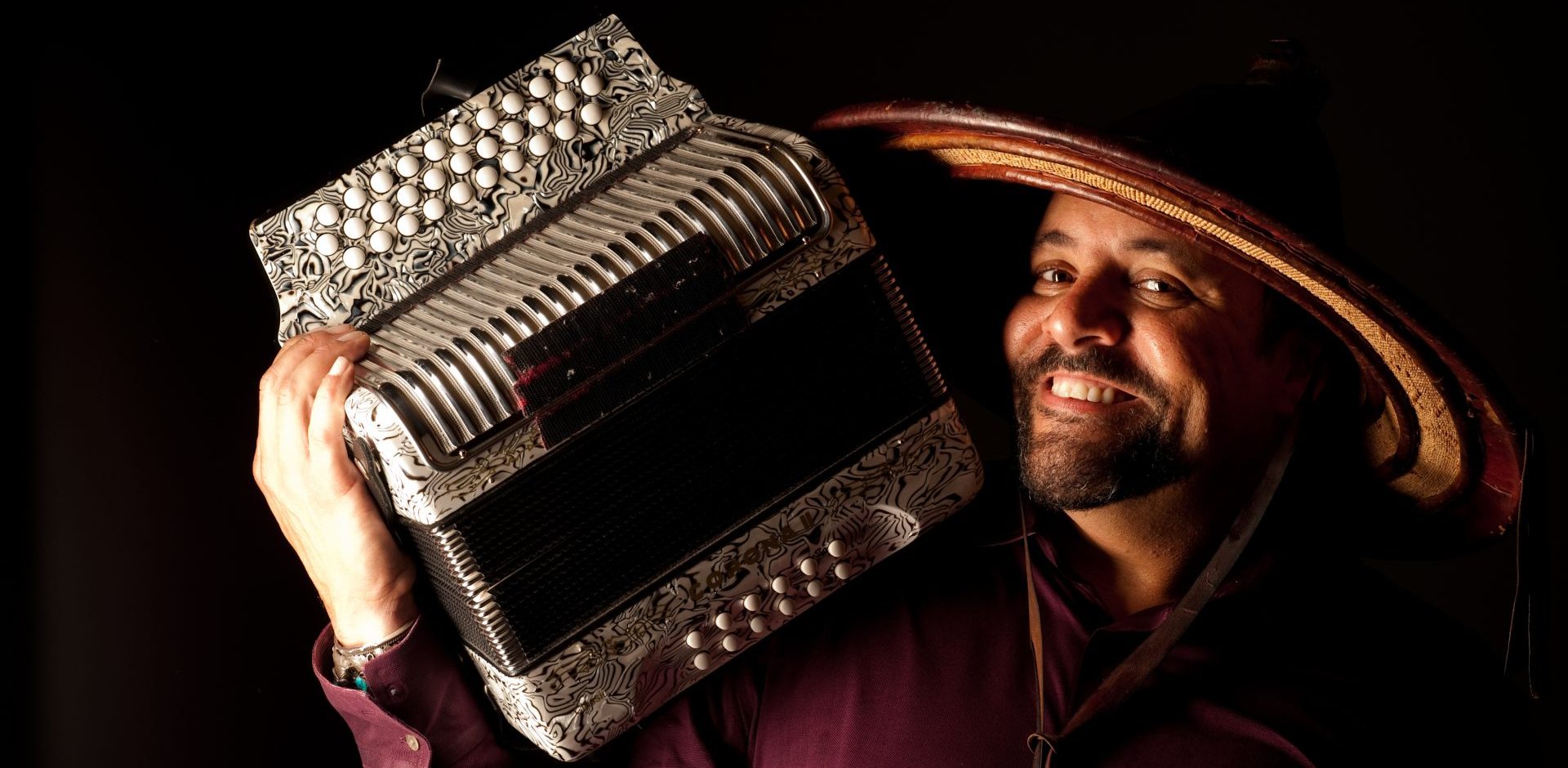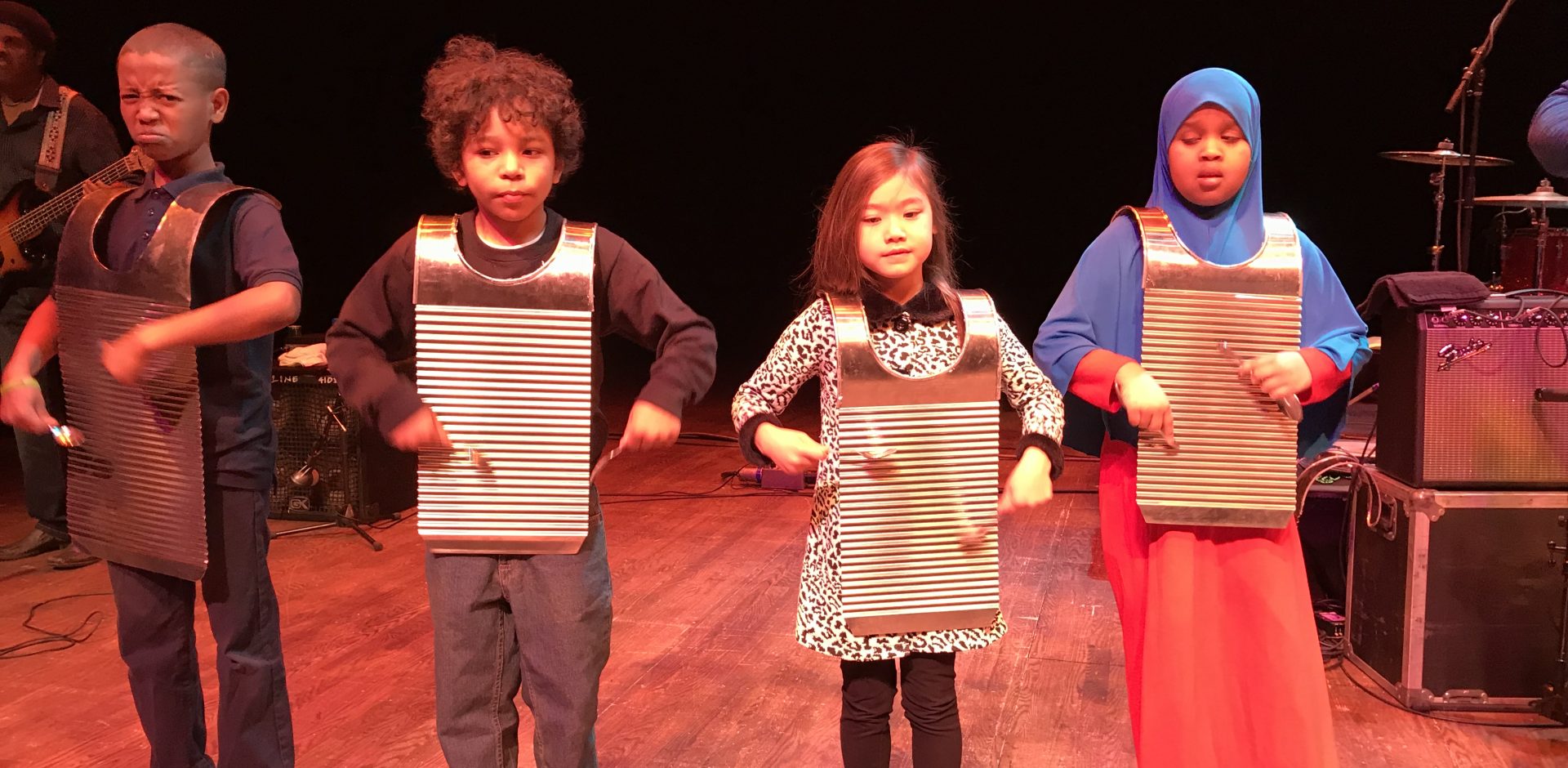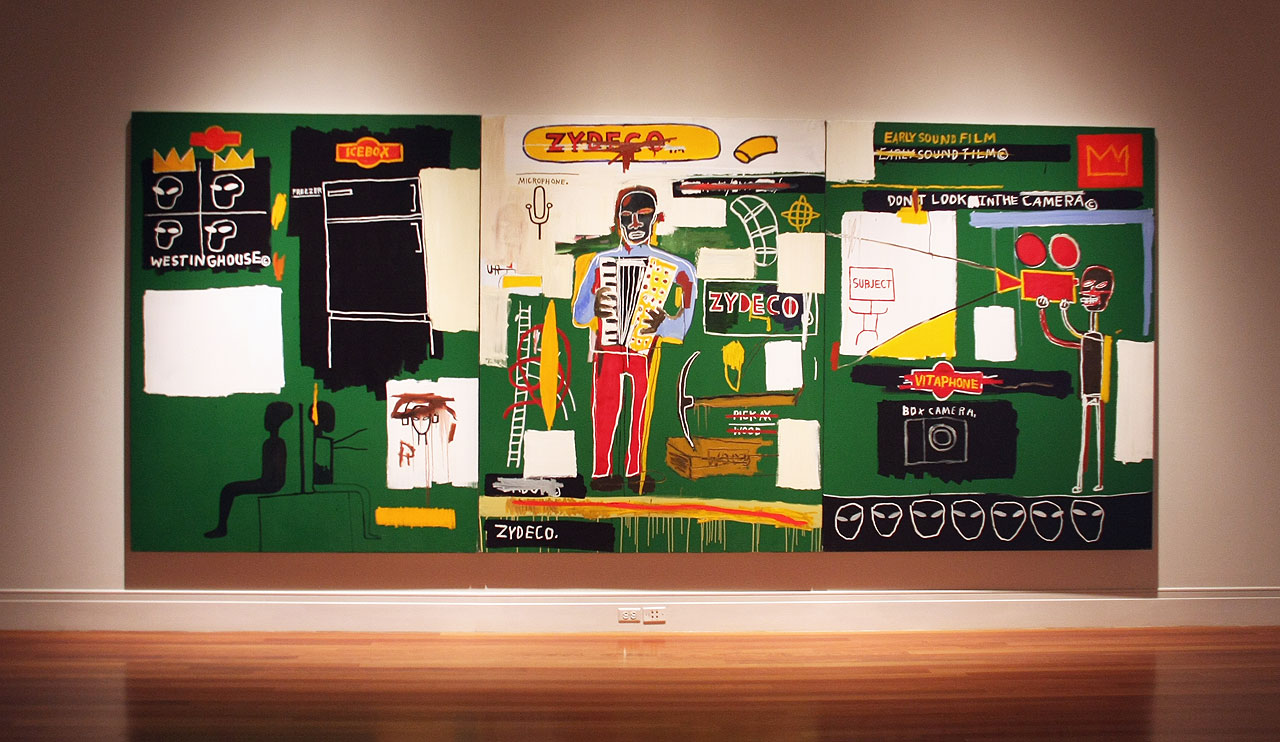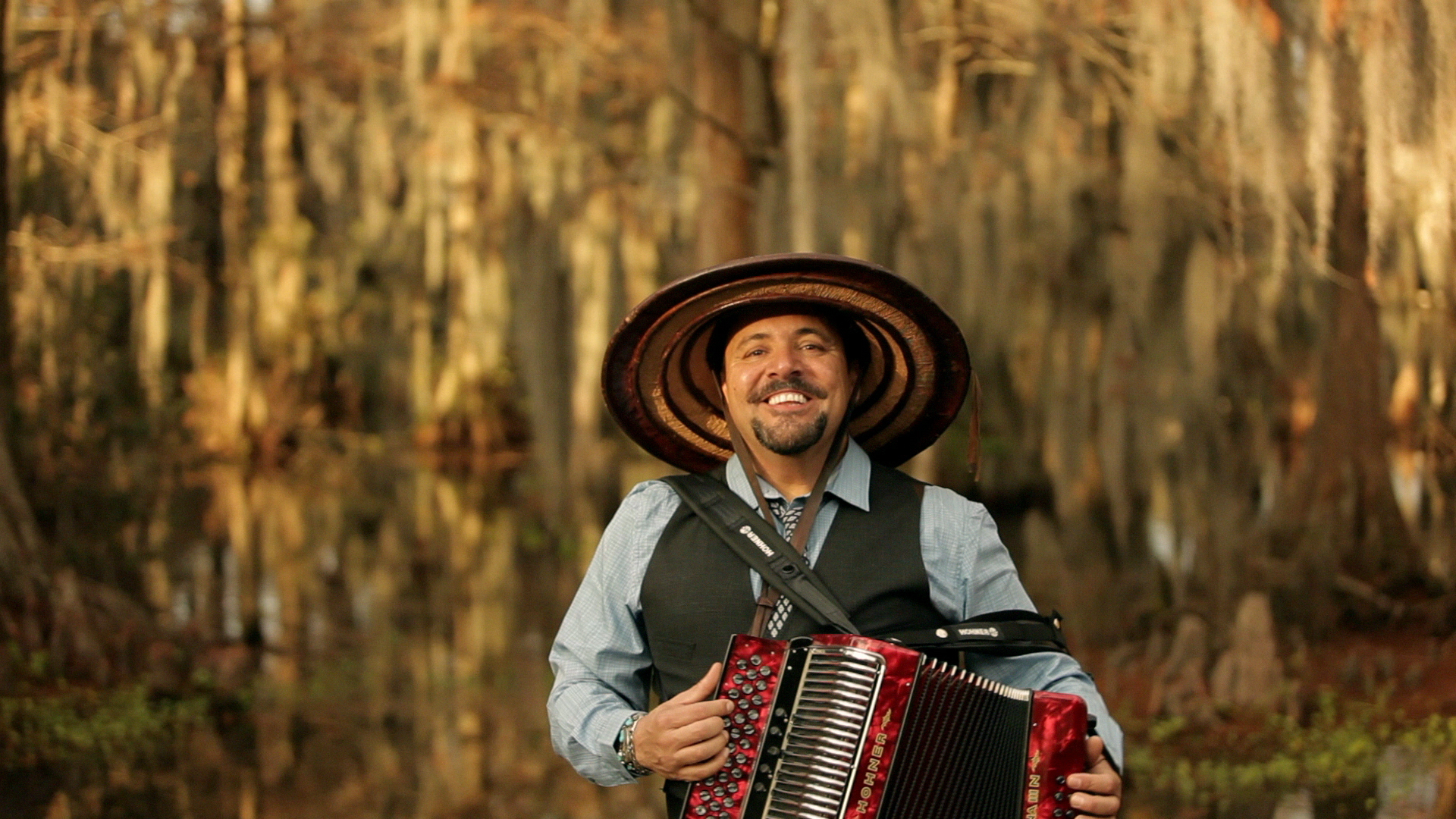Photo credit: Jake Springfield, (cypress tree & moss background). Photo credit: James Dean (stage/lights background) Click on photo for high res download.
Authentic artistry, an accomplished career.
For over 40+ years, two-time GRAMMY award winning, 8th generation Louisiana Creole, Terrance Simien (DOB, September 3, 1965), has been shattering the myths and often misinformation, about what his traditional Zydeco roots music is – and is not. It most certainly is Black American roots music and it is music born of the African American/Black and mixed race French speaking Creoles of South Louisiana. This is the truth and these are the facts.
Simien leads a highly skilled Zydeco Experience band with long time band member, close friend and creative collaborator: Danny Williams (30+ years, two-GRAMMY award winning), keyboards, vocals; Stan Chambers (15+ years, GRAMMY award winning), bass, vocals; Ian Molinaro – Thompson, drums; Michael Christie on trumpet and Noah Boshra, saxophone. Ian MT is a Berklee College of Music graduate and Mike a Shenandoah University graduate ( SU is in the top 10% of music programs in the country). Another Berklee College grad, Ethan Santos, trombone, also lends his skills to us on tour at times. Noah Boshran, joining us in 2024, is a Tulane graduate.
Simien has become one of the most respected and accomplished artists in American roots music today. He and his band mates have performed nearly 10,000 concerts, toured millions of miles to over 45 countries during their eventful career. Their music has been placed in multiple major studio theatre release films, including a Disney animated film, TV shows and radio commercials. They’ve shared studio and stage with legends the Meters, Art Neville, Los Lobos, Marcia Ball, the late Robert Palmer and Dave Matthews Band to name a few. They’ve been cultural ambassadors for their country since the mid 1980’s as part of the U.S,. State Department ongoing cultural diplomacy tours. They performed in Ukraine twice (2012, 2015) with the U.S. Embassy in Kiev and toured Russia for two weeks as well in 2015.
The ultimate calisthenics workout plan | onnit academy kettlebell chest workout why bodybuilders are so much bigger tPrepared for the future, inspired by the past.
At its deepest roots, zydeco music was traditional and performed acoustic with an accordion, fiddle and triangle and sung in French. The older generation simply called it French music. Before that, it was call and response, jure´songs* of the 19th century using only clapping hands, stomping feet and the yearning, often painful voices of the oppressed French speaking blacks unique to Louisiana. Although jure´ was still being performed in rural Louisiana into the 20th century. One must understand how remote and isolated parts of the rural Deep South were to understand they were often decades behind other parts of the country. When Terrance was just a kid, in the late 60’s he remembers horse and buggies being used as actual means of transportation in rural St. Landry Parish. The Creoles sang their songs through good times and bad, through slavery, Jim Crow and all the way up to the victorious time in 1982 when our friend and Queen Ida Guillory, now 95 won the first Grammy award for zydeco!
Zydeco is driven by African and Caribbean rhythms and has evolved musically over decades incorporating more popular genres like rock, funk, R&B and into the 21st century, incorporated rap and hip hop. Zydeco became wildly popular all over the world when it began to diversify from mostly trad French songs to contemporary sounding music that traveled more easily outside of the French speaking Creole community of Louisiana. During the 20th century Blues, jazz and folk audiences embraced the music and Terrance et al were at the forefront as the emerging face of the music, even performing in notable rock rooms in the US and Canada in the early-mid 80’s.
*The late John Lomax called Creole jure´ the “most African sounding music he’d found” in his travels to document American music for the Library of Congress
Zydeco is exhilarating and as complex and diverse as the Creoles. It’s also more than just one rhythm and one tempo. It’s definitely about the vocal performance as well. Terrance’s lead vocals and the stunning three part harmonies of he, Danny and Stan – are proof positive that vocal performances matter – a lot! Zydeco is dynamic and evolving – remaining relevant to allow its artists to express themselves within their genre without constraints. The late, Dr. John and Terrance’s friend/hero/mentor, once told him “if the music ain’t changin, it’s dyin.” We couldn’t agree with you more, Mac!
Not only is the group multicultural and multi racial, it’s also now intergenerational with three OG’s and three Gen Z’s.
Simien is blessed with an extraordinary vocal talent and on- stage charisma. He expresses our deepest human emotions through the original instrument: The Voice. He and his band mates take their audiences on a multicultural tour of the world as the many countries they’ve visited while touring have informed their musical language. This stellar group of artists create a hypnotic blend of New Orleans funk and brass- reggae-flavored-world-blues-American and zydeco roots music, that beckons you to your feet and into the groove. Simien has found an authentic and artful way to deliver his roots music as a relevant, evolving artist who is clearly rooted in Louisiana Creole music traditions. Well known for his legendary live performances, Simien also helped change the often (mis) perceptions of his genre by introducing complex vocal harmonies, diverse repertoire and carefully crafted high quality recordings.
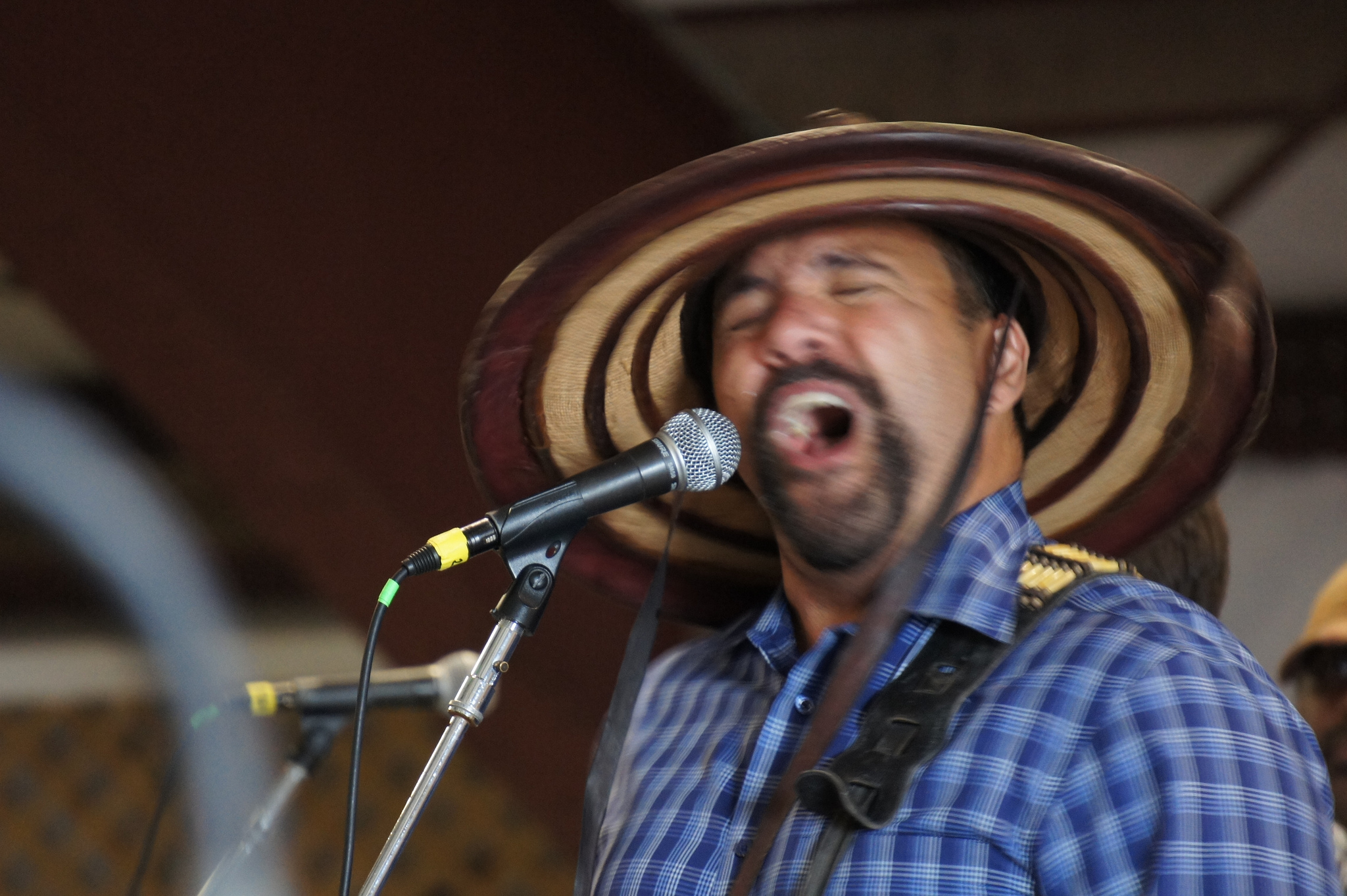
Simien has become one of the most respected and accomplished artists in American roots music today. He and his band mates have performed almost 10,000 concerts, toured millions of miles to over 45 countries during their eventful career. Their music has been placed in multiple major studio theatre release films, including a Disney animated film, TV shows and radio commercials. They’ve shared studio and stage with legends the Meters, Art Neville, Los Lobos, Marcia Ball, the late Robert Palmer and Dave Matthews Band to name a few. They’ve been cultural ambassadors for their country since the mid 1980’s as part of the U.S,. State Department ongoing cultural diplomacy tours. They performed in Ukraine twice (2012, 2015) with the U.S. Embassy in Kiev and toured Russia for two weeks as well in 2015.
In every genre, there are icons.
Terrance, who speaks decent French, sings many of his songs in French. With near expert knowledge of his music genre and Creole culture, he’s also only one of a handful from a generation with a direct link to the pioneers of contemporary zydeco, who with the exception of the Queen, Ida Guillory (born in 1929), have all passed away. When Simien started his band in high school in 1981, he was one of only 3 young zydeco artists performing this traditional music. All of the others at time were 20+ years older than he was. Simien counts himself fortunate to have been supported by mentored by John Delafose and encouraged by Clifton Chenier “to do his own thing, like me”, Cliff told him. Simien applied that seasoned advice – done and done, Cliff!
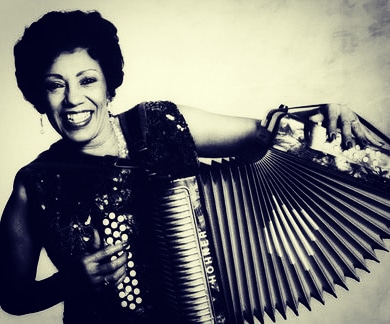
Queen Ida Guillory
Another little known fact for those not as knowledgeable about the history of zydeco is that Simien is one of those young emerging artists who was also responsible for the 1990’s renaissance of zydeco music. The three GRAMMY wins in the early-mid 80’s by Queen Ida, Clifton Chenier and Rockin Sidney Simien were a huge boost to the national visibility of the genre, but in the early 1990’s there were still only a handful of young, emerging artists stepping into the music to breathe new life and energy, like Terrance did and continues to do.
The contemporary Zydeco pioneers who are gone, but never forgotten.
Clifton Chenier (1925-1987); John Delafose (1939-1994); Wilson Anthony Boozoo Chavis (1930-2001) Rockin Dopsie(1932-1993); Rockin Sidney Simien (1938-1998) the only zydeco artist with an international Billboard radio hit song, My Toot Toot. Of course the late Stanley “Buckwheat Zydeco” Dural (1947-2016), became a household name for zydeco in his long and accomplished 45 year career. Another artist who was part of the 90’s renaissance, Andrus “Beau Jocque” Espree (1953-1999) had a short but very successful career in zydeco that lasted from 1991 until his death, as he had just performed the night before he died.
Simien has been influenced by many artists and his artistry is informed by many different music genres as well. He was especially inspired by the zydeco pioneers and credits those who came before him for his own success for their sacrifices and struggles, tragedy and triumphs. He was as inspired by the Neville Brothers, Art “Poppa Funk” Neville, Sam Cooke, Bib Dylan, Earth Wind and Fire and the Commodores as he was by Clifton Chenier, Queen Ida and John Delafose. He saw their success attainable for himself as well.
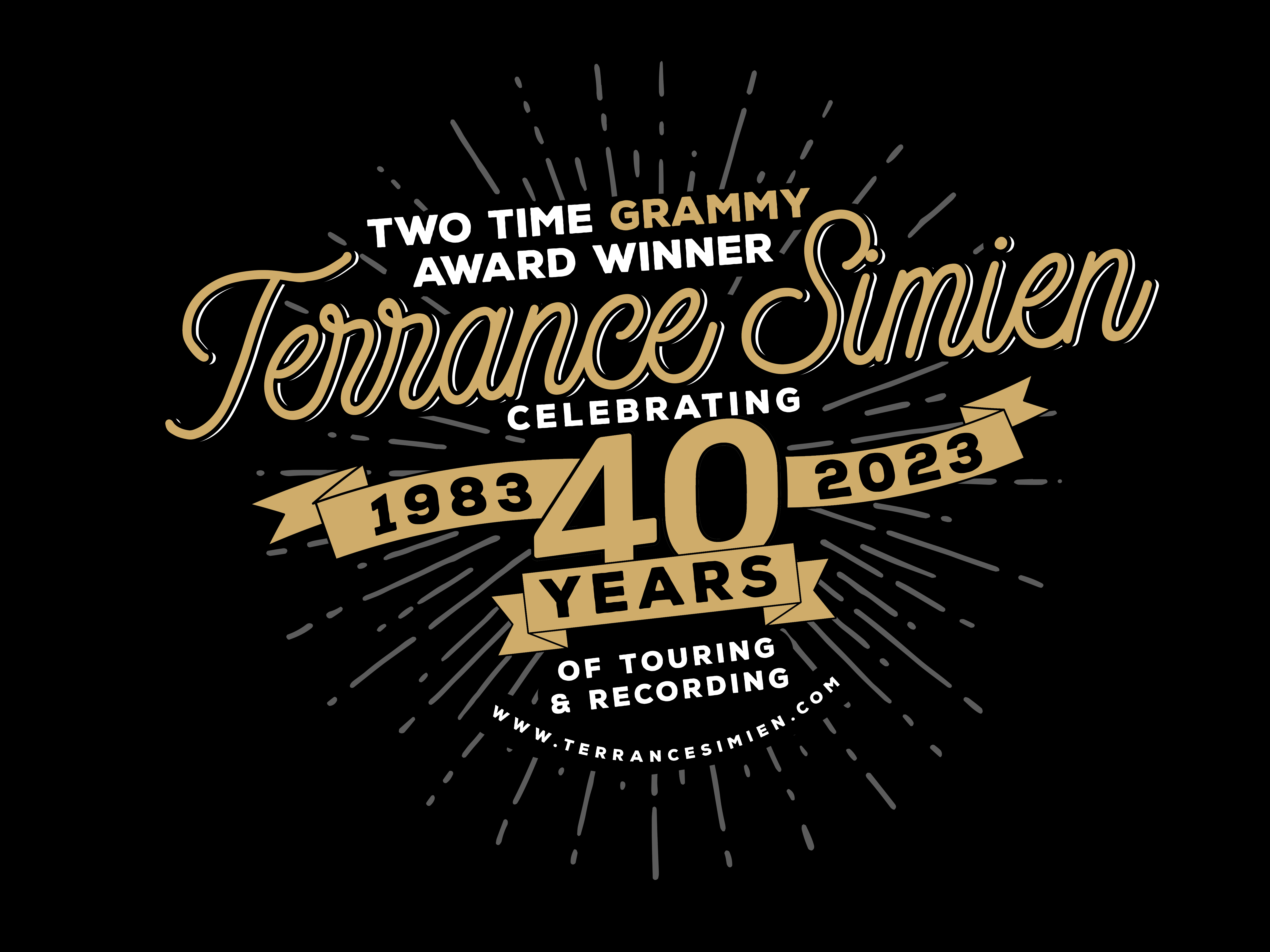
Empowered by identity.
Finally, just another quick commentary on the confusion about what Zydeco is and is not. One thing it definitely is not – is Cajun music. Zydeco was not incubated from the Cajun culture, so please don’t let anyone tell you differently. If they do, please send them our way and we will try to help school them. Because, we are the experts on our music and our culture, and we are responsible stewards of both. Because of that, our culture and music have remained relevant. We also prefer getting our history from within our own community instead of from outsiders who attempt to define who we are as POC, Creoles and African Americans. We choose to be influenced by all the great zydeco artists who came before us to inform what our music is and is not. We glean our information and inspiration from the struggles of our ancestors and musical brethren – from the people who experienced racism firsthand and whose stories of triumph over prejudice to become successful, still inspire us. We stand on their shoulders every single day we work hard for our own success.
We are also acutely aware and well informed about our own history because first and foremost, we have lived it. And then we did the research on those who lived it before us. We continue to be students of Creole culture and music history, and we are obsessed with history! We’ve also had direct contact with the pioneers of zydeco and been greatly influenced by them, as well as other giants in diverse genres like funk, blues, roots and popular music. Taj Mahal, Art Neville, Dr. John, David Hidalgo and Los Lobos, Paul Simon, Clifton Chenier, Queen Ida and John Delafose, to name a few. We know a few things and we know that history matters, a lot. – Please don’t hesitate to pop us question about our own music and history and we should have a solid and well informed answer for you!
In 2023, Simien celebrates 40 years as a full time professional touring and recording artist. When he graduated from Lawtell High in 1983, with the support of his parents, he started a full time career in music. In 1986 it got really serious when he was signed by a major booking agency, Concerted Efforts, (owner, Paul Kahn- agent, Steve Hecht) Boston, MA. His contributions to American roots music, the cultural identity of his community and state are vast, and varied. He’s an outspoken advocate for DEI in the performing arts, more history, especially Black history and the Creole’s unique role in this larger story.
Fun fact: In 2012, we got the last word when Zydeco became the final entry to the American Dictionary of Regional English.
What is Creole you ask? It’s complicated y’all and requires a great deal of patience.
“The term “Creole” has long generated confusion and controversy. The word invites debate because it possesses several meanings, some of which concern the innately sensitive subjects of race and ethnicity. In its broadest sense, Creole means “native”—or, in the context of Louisiana history, “native to Louisiana.” In a narrower sense, however, it has historically referred to black, white, and mixed-raced persons who are native to Louisiana. In short, the word means different things to different people, and more than one ethnic group arguably has a claim to the term.” – 64 Parishes, Creoles page
We often refer to this body of data, 64 Parishes Encyclopedia for well researched information about Louisiana. It’s a project of the Louisiana Endowment for the Humanities since 1971. We respect their knowledge about Louisiana and its complexities and we often cite their data when educating our audiences.
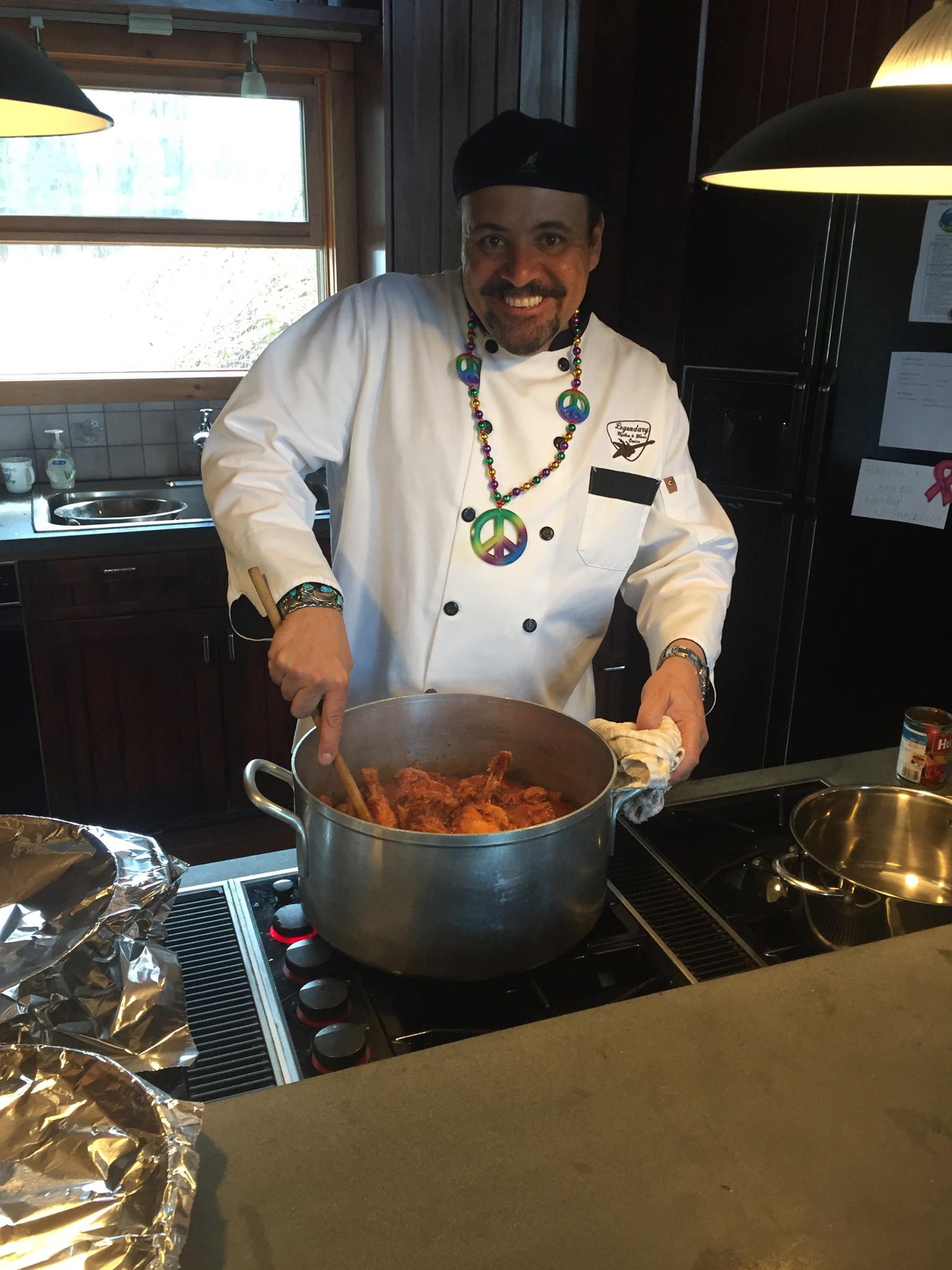
“Louisiana is complicated. From The Delta to the Neutral Strip, we change shapes, add flavors, and remix sounds. Genius runs deep in the fields and bayous, and every generation emerges with new views on what it means to be from Louisiana. People gravitate here from around the world. We have food, fortitude, tragedies, and creativity for days, but you need to listen closely. 64 Parishes believes that every corner of Louisiana has something to say. We work with writers, artists, and communities to tell stories that explore our past and reflect on our present, stories that are all about Louisiana”
Kreol Magazine, Editor Georgina Dhillon offers up one of the most poignant and compelling pieces about what Creole is and is not. As people become more connected to their history and roots, information becomes more available and hence the definition can change.
We also came upon this and while at times Wikipedia can be questionable, there is accuracy in this definition of Creoles – in broader, global terms. Creoles live all over the world, connecting Louisiana Creoles to part of a larger story and World History. Louisiana Creoles are also an important part of American and U.S. History, Louisiana History and Black/African American History.
“Creole peoples are ethnic groups formed during the European colonial era, from the mass displacement of peoples[a] brought into sustained contact with others from different linguistic and cultural backgrounds, who converged onto a colonial territory to which they had not previously belonged.[2][3]
Often involuntarily uprooted from their original home, the settlers were obliged to develop and creatively merge the desirable elements from their diverse backgrounds, to produce new varieties of social, linguistic and cultural norms that superseded the prior forms.[2][3][4] This process, known as creolization,[5][6] is characterized by rapid social flux regularized into Creole ethnogenesis.
Creole peoples vary widely in ethnic background and mixture and many have since developed distinct ethnic identities. The development of creole languages is sometimes mistakenly attributed to the emergence of Creole ethnic identities; however, the two developments occur independently.” – Wikipedia, Creole peoples
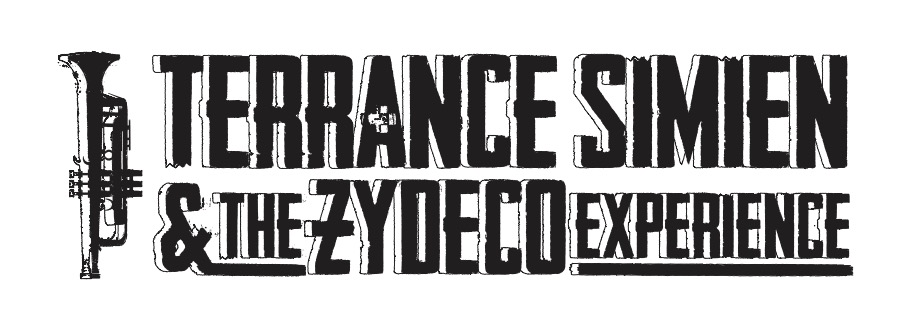
In 2021 Simien led the effort to have Allen Toussaint’s “Southern Nights” become the first Louisiana state song ever written by an African American artist/composer. A very big deal! Simien was also the recipient of the prestigious Foundation for Louisiana Worldmakers unrestricted grant with priority to BIPOC artists. He was one of 30 awarded out of 360 applications, and the only from his part of the state and genre. Finally, the zydeco exhibit we helped curate, went live on MLK Day this year at the $60 million National Museum of African American Music in Nashville, TN – ironically, right across the street from The Ryman where few African Americans have performed.
2020 is not the most remarkable year in our lives and careers, but finishing a studio album was no small feat during a pandemic – so, we’ll take it!
2019 marked Simien’s 34th consecutive New Orleans Jazz & Heritage Festival – the gold standard for diversity in American roots music.
2014 proved to be another memorable year when Simien & his collaborators from the Zydeco Experience band were honored with their second GRAMMY award in Los Angeles on January 26, 2014 at the Nokia Theatre.
2012 found Simien & his band mates seen performing their original song “Dance Everyday” in the Warner Brothers film “The Lucky One” starring Zac Efron and Blythe Danner, and directed by Oscar nominated director Scott Hicks. Simien’s version of zydeco standard “Uncle Bud” was also used in the film.
2009 signaled the release of Disney’s “The Princess and the Frog”, set in the city of New Orleans and featured their first black princess. Alas, history was made with that one move! Simien is the featured guest artist on “Gonna Take You There”, a zydeco flavored song penned by Randy Newman. Simien recorded the song with Newman in Los Angeles in late 2007 and it has became a favorite track for children everywhere! Simien’s student audiences all over the country sing along with him when he & his band mates perform it during their school time performances. History was also made again, in a very big way for this genre – as it was the first time Disney featured zydeco music in a film. As if that wasn’t enough – the word zydeco was also spoken in the movie by one of the characters! This classic film has introduced millions of people, families and generations of young children to a black American roots music genre most were not familiar with prior to seeing the movie. We are forever grateful to John Lasseter and Tom MacDougall President, Walt Disney Music, for this rare opportunity to have zydeco immortalized in a Disney film.
In 2005 Simien led HBO producers deep into Creole country for another high visible opportunity for the genre and he introduced them to the prodigious 5 year old zydeco talent, Guyland Leday. This gifted young musician was featured in the HBO doc “The Music in Me: Children’s Recitals from Classical to Latin, Jazz to Zydeco. This was a huge victory for his state, genre and Creole culture. It was also this year that they became the first zydeco artists to perform in Cuba for the U.S, State Department. In 2006, Carnegie Hall presented them in Mali, West Africa as part of their unique Global Encounters program. There have been multiple U.S. State Department tours to North Africa, Ukraine, Russia, Dominican Republic, Paraguay – all as part of the U.S Cultural Diplomacy efforts around the globe that began in 1955.
However, it was 2008 that proved to be one of the most memorable years of an eventful career when the band was honored with their first GRAMMY™ award and the first in zydeco since 1985, when Rockin Sidney won his gold. The group also performed at The 50th GRAMMY™ Awards pre-Tel ceremony. This was also the culmination of 7 years of hard work to establish a new Grammy category for best Zydeco or Cajun Music Album, that Simien and his wife/business partner, Cynthia led to success. They effectively changed the vocabulary of the Recording Academy and the trajectory of the history for both genres. Because of their efforts that began in 2001, to connect their region with the GRAMMY awards after decades with little or no recognition in the awards, since 2008 over 100 Cajun & zydeco artists have garnered Grammy noms and awards. Their hard work embodies an inclusive leadership style and artist advocacy for the greater good of their broader music community, Lafayette, Opelousas and state of Louisiana. This is also now an important part of Southern roots music history, African American music history and the Americana Music Triangle. (photo below; Americana Music Triangle map)
Simien was born (appropriately) in 1965 into the hippie folk and soul music era that still intrigues him today. He grew artistically being influenced and inspired by all of the music from that period. He was as influenced by Dylan and Simon and Garfunkel as he was by Sam Cooke and the Commodores. Since his family is documented in history books as one of the first Creole families to settle St. Landry Parish, his musical roots are firmly planted alongside the great zydeco pioneers like Chenier, Delafose, Chavis, Ardoin and that other Simien, Rockin Sidney, to name a few. He counts himself one of the fortunate few who hail from a generation with a direct link to these artists, some of whom mentored him as an emerging talent. He has assumed that same role to a new generation of young Zydeco hotshots because he understands how critical mentoring is to the success of his indigenous music that has become synonymous with the cultural identity of Louisiana and an important part of the musical landscape of this country.
In 1983 at the young age of 18, Simien began touring professionally and by 20 he was sharing the stage with Fats Domino and Sarah Vaughn at the Bern Jazz Festival. His career exploded after that and Terrance remains a pivotal part of Zydeco music history. In the early 1980’s there were only 2 emerging bands touring nationally; the young Terrance and The Sam Brothers were the only artists reaching a younger audience with their indigenous roots music. Simien was also vital to the “renaissance” of a genre that was becoming extinct with the passing of each pioneer starting with Clifton Chenier in 1987. By the end of the 1990’s, all of the other influential pioneers had departed. This placed Terrance at the forefront of an exciting period of growth and popularity for this black roots music born in the rural, French speaking Creole communities of South Louisiana. Some call him the OG of zydeco! We’re def down with that – because he did not inherit his success, he earned it.
Terrance and his loyal and very experienced band of brothers have shared studio and stage with Art Neville, Paul Simon, Robert Palmer, Stevie Wonder, Los Lobos, Taj Mahal, Dr. John, Marcia Ball, the Meters and Dave Matthews Band to name a few. Their music has been featured in TV commercials and a dozen or more films, including the blockbuster “The Big Easy” which changed the game for Louisiana music in the late 80’s. Their music has been heard on NPR syndicated radio shows like World Café, American Routes, E-town & House of Blues Radio Hour. Rolling Stone, Billboard, and other notable music industry publications, as well as major daily newspapers have praised his recordings. His extensive discography dates back to vinyl 45’s. In 1991 he was signed to rock label Restless Records by A&R rep Ron Goudie who brought the band Poison to the same label group.
Simien’s groundbreaking Creole for Kidz & The History of Zydeco for student, youth and family audiences has reached nearly 500,000 since its debut in 2000. This dynamic program is presented at performing art centers, schools and festivals. Simien is helping build a more culturally literate young performing arts patron who is more knowledgeable about zydeco roots music because of his program. Simien has received countless awards, grants and recognition for his work and artistic contributions as a respected Cultural Ambassador for his state and country.

